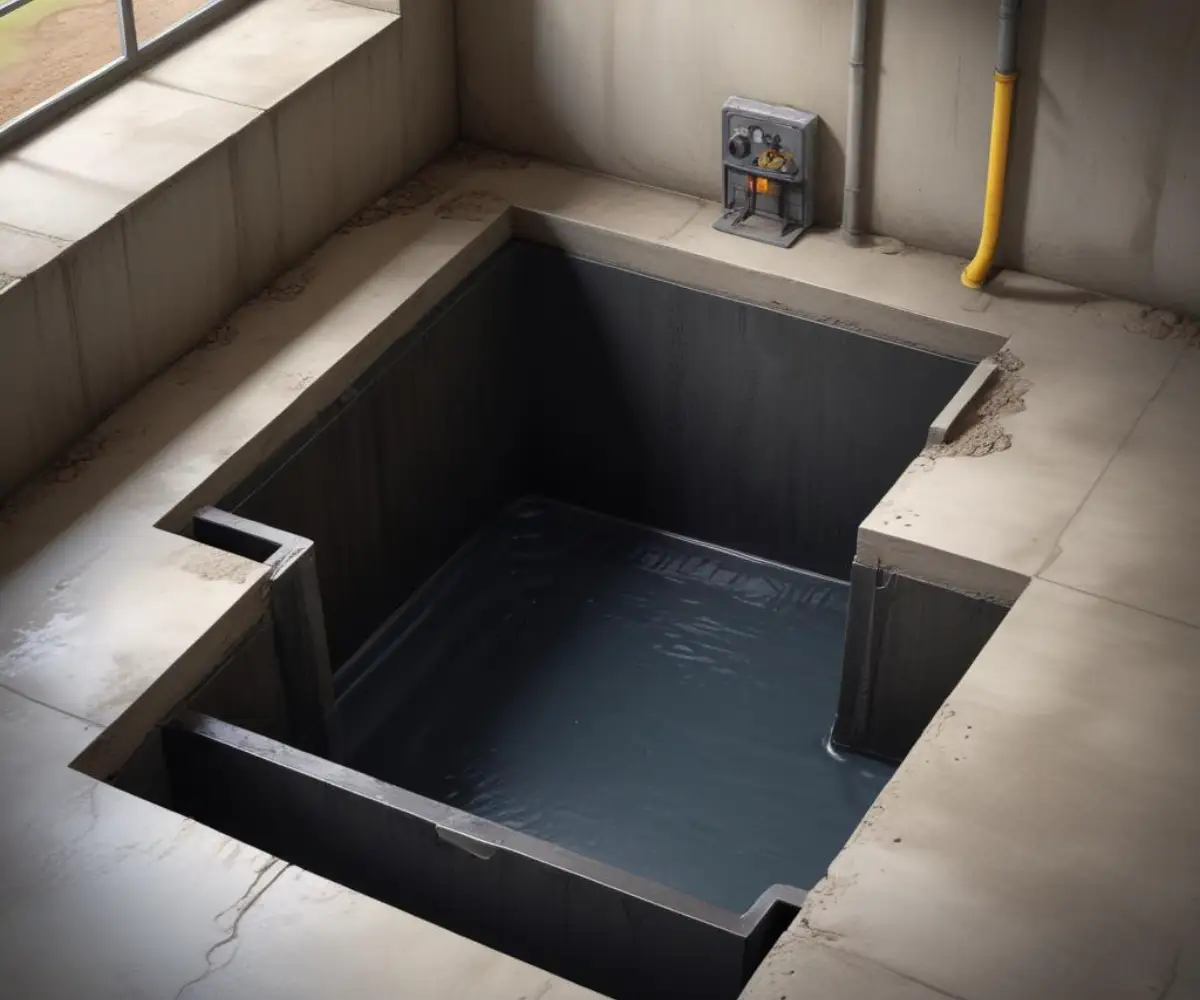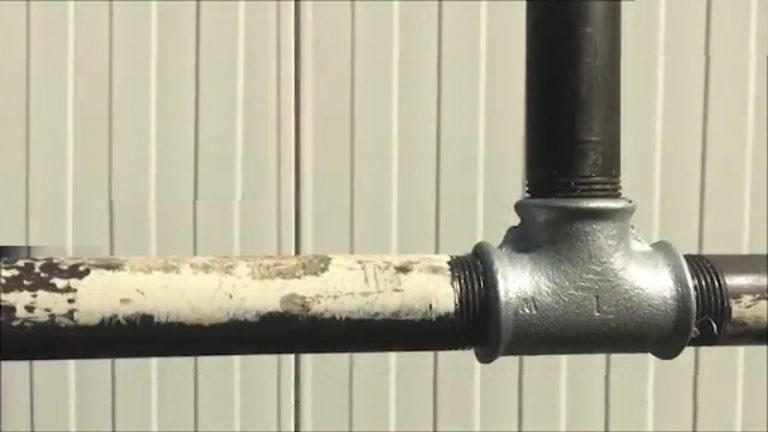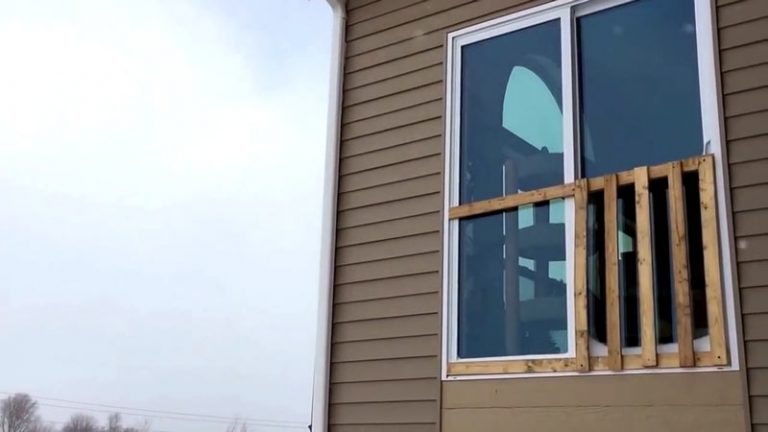Sump Pit Without Pump? Don’t Ignore This Hidden Basement Danger
You’re exploring your basement or crawl space and you find it: a mysterious, empty hole in the floor. This is a sump pit, or sump liner, and discovering one without a pump inside can be confusing. Is this a forgotten project, a sign of a past problem, or a ticking time bomb waiting for the next heavy rain?
Ignoring an empty sump pit is a significant risk. That hole was installed for a reason, and understanding its purpose is the first step toward protecting your home from water damage, poor air quality, and even invisible hazards like radon gas.
You'll Learn About
What Exactly Is a Sump Pit and Why Is It in Your Basement?
A sump pit is the heart of a basement waterproofing system. It is a perforated basin, typically made of heavy-duty plastic, installed at the lowest point of your basement or crawl space. Its job is to act as a collection point for excess groundwater before it can seep onto your floor.
Often, the pit is part of a larger system that includes perimeter drains (also called weeping tiles) installed along the foundation. These drains capture water and channel it directly into the pit. A sump pump would then activate to eject this water safely away from your home’s foundation.
Sometimes, a builder might install a sump pit to comply with building codes or as a precautionary measure in an area with a known high water table, even if a pump isn’t immediately needed. However, the presence of the pit itself is a clear indicator that water intrusion is a potential threat.

The Dangers of an Empty Sump Pit: More Than Just Water
An unused, open sump pit is far from harmless. It poses several significant risks to your home’s health and your family’s safety, some of which are not immediately obvious.
The Unseen Threat: Radon Gas Entry
Perhaps the most critical danger of an open sump pit is that it provides a direct, easy pathway for radon gas to enter your home. Radon is a naturally occurring, radioactive gas that comes from the breakdown of uranium in soil and rock. It is invisible, odorless, and the second leading cause of lung cancer in the United States.
Your foundation floor acts as a barrier, but an open pit is like leaving a window open to the soil underneath. This significantly increases the risk of elevated radon levels in your home, making it crucial to address the opening whether you need a pump or not.
The Obvious Risk: Basement Flooding
The most apparent danger is flooding. The sump pit is there because groundwater is expected to accumulate. During heavy rains, a rapid thaw, or periods of a high water table, water will fill the perimeter drains and pour into the pit. Without a pump to remove it, the water will simply overflow onto your basement floor, causing widespread damage.
Unwanted Guests: Pests and Insects
An open hole in your floor is a welcome mat for pests. Insects like spiders, centipedes, and cockroaches, as well as rodents, can easily enter from the surrounding soil. This can lead to infestations that are difficult to control. For more tips on this, learn ways to keep bugs out of your sump pump system, as a sealed pit is the first line of defense.
Humidity, Mold, and Musty Odors
Even if the pit doesn’t overflow, any standing water at the bottom will evaporate. This process continuously releases moisture into your basement’s air, raising humidity levels. High humidity creates the perfect breeding ground for mold and mildew, leading to musty odors and poor indoor air quality, which can impact your home’s overall health, a concern often addressed through solutions like crawl space encapsulation.
Assessing Your Situation: Do You Actually Need a Pump?
Before deciding on a solution, you need to determine the level of risk. The fact that the pit is dry now doesn’t mean it will be dry tomorrow. Here’s how to properly assess your situation.
1. Look for Evidence of Past Water
Inspect the inside of the sump pit closely. Look for a “water line”—a discolored ring indicating how high water has risen in the past. You might also see white, chalky residue, known as efflorescence, which is left behind as mineral-rich water evaporates.
2. Understand Your Local Environment
Is your home located in an area with a high water table, heavy clay soil, or frequent, intense rainfall? A quick search for your local soil type and water table information can provide valuable context. Remember that water levels are often highest in the spring after winter thaws.
3. Perform a “Bucket Test”
To see how your pit handles water, slowly pour 5-10 gallons of water into it. Watch to see what happens. Does the water drain away on its own through the gravel at the bottom, or does it sit there? If it drains very slowly or not at all, you absolutely need a pump for active removal.
Solutions: What to Do About Your Pump-less Sump Pit
Once you’ve assessed the risk, you have two primary paths forward: install a pump for active water management or properly seal the pit to eliminate the safety hazards if a pump is truly unnecessary.
Solution 1: Install a Sump Pump (The Gold Standard)
For most homes with a sump pit, installing a sump pump is the safest and most reliable solution. This turns your passive pit into an active defense system against flooding. A qualified plumber or waterproofing contractor can help you select the right size and type of pump (submersible is most common) and ensure it’s installed correctly.
A complete system should include a check valve on the discharge pipe and an airtight, sealed lid. Once installed, you might have questions about its operation; for example, if you wonder why you hear water running in your sump pump, it’s often a normal part of the process as water collects and is discharged.
Solution 2: Properly Seal the Sump Pit (When a Pump Is Not Needed)
If you have thoroughly investigated and are certain your basement faces no water threat, you cannot simply leave the pit open. You must seal it to prevent radon gas, pests, and humidity from entering your home. A simple piece of wood or a loose-fitting lid is not enough.
You need to purchase a dedicated, airtight sump pit cover. These covers are designed to create a perfect seal with the concrete floor. They often include rubber gaskets and ports that can be sealed if unused. This is a critical step for maintaining healthy indoor air quality.
Solution 3: The Passive Gravity Drain (A Rare Alternative)
In very specific situations, typically for houses built on a steep hill, a passive gravity drain may be an option. This involves running a drainpipe from the bottom of the sump pit downhill to a safe discharge point away from the house. This allows water to drain away naturally without a pump.
However, this is a complex and highly situational solution that depends entirely on your property’s topography. It should only be considered and installed by a professional waterproofing expert.
Sump Pit Problem & Solution Overview
Navigating the issues of an empty sump pit can be simplified by understanding the direct correlation between the problem and the most effective solution. This table breaks down the common risks and the recommended actions to safeguard your home.
| Identified Issue | Risk Level | Primary Recommended Solution | Secondary Action |
|---|---|---|---|
| Potential for Radon Gas Entry | High | Install an airtight, sealed sump pit cover. | Conduct a home radon test to verify levels. |
| High Risk of Basement Flooding | High | Install a submersible sump pump with battery backup. | Ensure the discharge line directs water far from the foundation. |
| Pest and Insect Infestation | Medium | Install a secure, solid sump pit cover. | Seal any other visible cracks in the foundation floor. |
| Increased Humidity and Musty Odors | Medium | Install an airtight sump pit cover to stop evaporation. | Consider using a basement dehumidifier. |
| Pit is Always Dry, No Water Evidence | Low | Install an airtight, sealed sump pit cover for safety. | Periodically inspect the pit during severe weather events. |
Your Sump Pit is a System, Not Just a Hole
That empty hole in your basement floor is not something to be ignored or simply covered with a piece of plywood. A sump pit without a pump is an incomplete system that leaves your home vulnerable to water damage, pests, and the serious health risk of radon gas.
Take the time to assess your situation properly. Look for signs of water, test the pit’s drainage, and understand your local environment. Whether you need to install a pump or securely seal the pit with an airtight cover, taking decisive action is a crucial investment in your home’s value and your family’s health.


